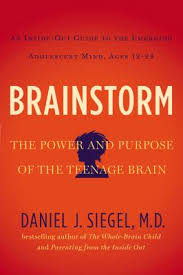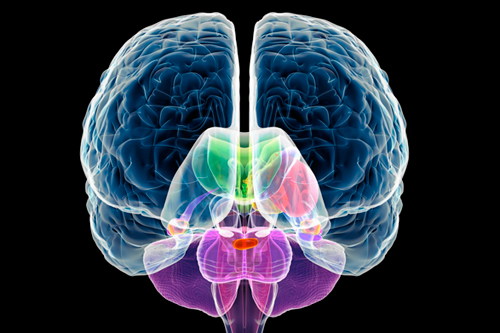 What’s wrong with teenagers? Why do many of them take dangerous risks? Why do they care more about their friends than their families? And why do they lead lives of such high drama and intense self-expression?
What’s wrong with teenagers? Why do many of them take dangerous risks? Why do they care more about their friends than their families? And why do they lead lives of such high drama and intense self-expression?
According to renowned psychologist and bestselling author Daniel J. Siegel, M.D., there’s nothing wrong with teenagers. In his new book, Brainstorm: The Power and Purpose of the Teenage Brain (Tarcher/Penguin), he encourages parents to understand rather than fight the inexorable features of adolescence (ages 12 to 24). As he puts it, “You cannot stop a waterfall, but you can learn to direct its course and harness its power.”
Teens are in a time of life when people have the most power to be courageous and creative, Siegel asserts. Their behavior results directly from changes in the fundamental circuits of the brain that give rise to the exact qualities that can exasperate the adults in their lives:
- Novelty seeking
- Social engagement
- Increased emotional intensity
- Creative exploration
As Siegel explains, how teenagers cultivate these qualities determines who they’ll be as adults.
The work of the teenage brain is, among other things, the work of neural integration—different areas of the brain linking together. At this age the brain lays down myelin, the sheath that covers membranes among interlinked neurons. Here is literally where it all comes together.


The essential “pruning” stage of brain development also occurs during these years. Adolescents have already begun to give their mental resources to certain activities and interests and not others. Thus the teenage brain begins the task of discarding neurons and synapses that it doesn’t think it will need. If they haven’t started violin or speed-skating lessons by now, it doesn’t mean they’ll never be great, but it does indicate that they’ll have a harder time excelling.
This pruning activity in teens who don’t have enough neurons to begin with explains why major psychiatric illnesses such as bipolar disorder, depression, and schizophrenia sometimes show up for the first time among high school and college students. Further brain development might adjust the impairment; otherwise a serious new disorder may emerge during these years.
The normal integrated adolescent brain leads to “gist thinking”: the ability to make wiser judgments based on an intuitive grasp of the bigger picture. Yes, intuition helps adults make good decisions, as it helps us embrace goals that mean something to us rather than pursue immediate gratification. The notorious poor judgment of many teens is a function of their lower baseline level of dopamine and higher level after exhilarating experiences, compared with adults. Thus teens are famously “bored” without stimulating and novel activities. They’re aware of the risks they take, but they take them anyway because of their increased reward drive. How does this and other characteristic behavior manifest itself?
- Increased impulsive behavior because the “regulatory fibers” in the brain are growing at this age (and will eventually counteract the revved-up reward system).
- Increased susceptibility to addiction (which releases dopamine) to alcohol, drugs, or addictive foods such as processed foods and simple carbs.
- Hyperrationality: thinking in literal, concrete terms; seeing the facts but not the big picture. The teen brain amplifies a possible positive outcome and downplays any possible negative results.
Siegel has written this book for teens, too, ending each chapter with “Mindsight Tools”—practical exercises and tips for developing insight and empathy and improving integration.
“Life is on fire when we hit our teens,” Siegel writes, and possibly because adults’ lives no longer feel that way, we often have a hard time with our kids at this stage. No point in asking teens “What were you thinking?” Understanding how they’re thinking will help you puzzle out that exquisite and sometimes infuriating state known as adolescence.
Click here to see Rose’s tips for healthy and happy relationships



2 Comments
Holly Scott
I am buying this book for my office right now. It sounds like it will be a wonderful resource when talking with parents about how their teenage children are “making me crazy!” Thanks for sharing.
Michele Rosenthal
Terrific article! I just interviewed Siegel about this book on my radio show. Very interesting to hear him speak about it: http://www.changeyouchoose.com/integration-in-ptsd-and-trauma-recovery/